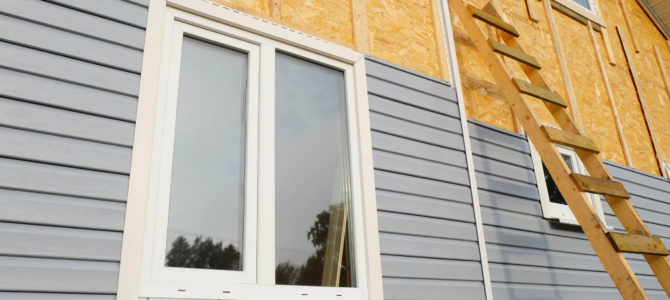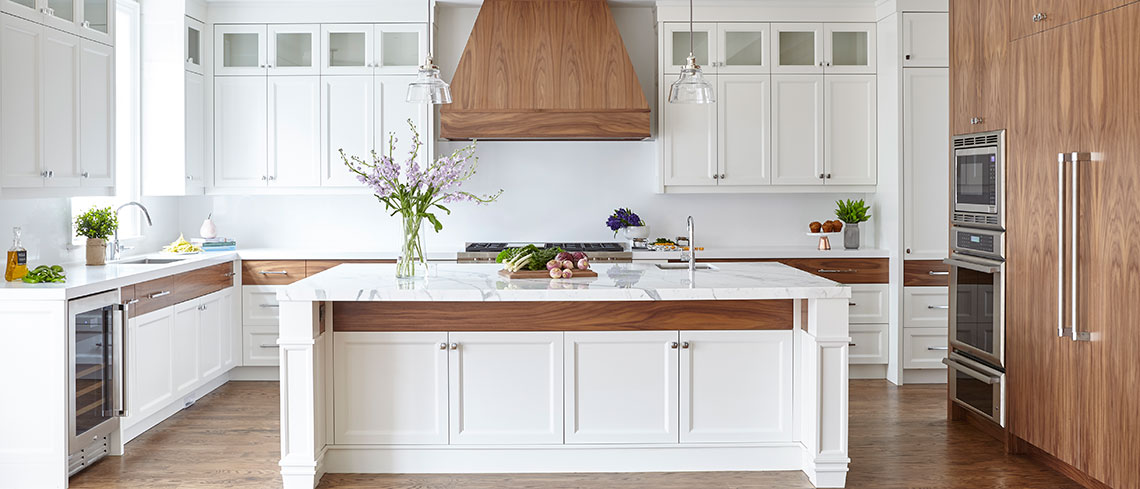Siding is used to protect the exterior of your house from elements and other damage. It can be made from a variety of materials, and the type you choose depends on your climate and style preferences.
Fiber cement siding resembles wood and comes in clapboard, shingle and panel styles. It is mold, insect and weather-resistant. For more information, click the link https://www.hawkinssidingandexteriors.com/ provided to proceed.

While the primary purpose of siding is to protect a structure from environmental elements, many homeowners and contractors also consider it a vital aspect of curb appeal. With a wide range of options, homeowners can express their individuality through the design and color choice of sidings. The right style and color can elevate a property, making it stand out from the surrounding neighborhood. However, the selection process can quickly become overwhelming when faced with the multitude of options. To help simplify the process, Ludovici Roofing & Construction has compiled the following tips for selecting the best siding for your property.
The Material Matters
Choosing the right material is crucial for defining the aesthetics of a building. Traditional materials like wood convey warmth and authenticity, while modern materials like vinyl or fiber cement provide sleek and contemporary looks. Aside from these distinctions, each material also offers different advantages. For instance, vinyl is pocket-friendly and low-maintenance, while wood strikes a balance between aesthetics and durability by deterring moisture and insects.
Another factor to consider when selecting the right siding is the weather conditions of your area. Regions with harsh climates often require siding that’s resistant to damage from heavy rainfall or intense sunlight. In such cases, you may want to consider an engineered wood, vinyl or fiber cement option that withstands these extreme weather conditions while providing superior insulation.
Additionally, you’ll want to match the siding with your home’s overall design and architectural integrity. Whether your home is contemporary, rustic or traditional, the coordinating colors, textures and finishes will enhance its beauty.
For example, shiplap can complement the sturdiness of cedar shingles with a classic look, while cladding can create a sleek and minimalist aesthetic. If you’re indecisive, you can always consult a professional to learn more about the available options.
The color of your siding can make or break its curb appeal. Vibrant colors are an effective way to distinguish your property, while more neutral shades can create a seamless blend with the surrounding neighborhood. The color palette of your neighborhood also plays a significant role, as you’ll want to avoid choosing a hue that clashes with other homes in the area.
Durability
While aesthetic preference plays a role in siding selection, homeowners also want to consider how long the material will last. Modern siding materials are designed to withstand harsh weather conditions and protect the home from moisture infiltration, rot and insect damage. With proper installation and routine maintenance, the durability of siding can extend the lifespan of your home or building.
Traditional wood siding offers a classic look and natural beauty, but requires periodic maintenance to prevent rot, pests and fungal growth. With the help of a good maintenance program, wood siding can last 25 to 55 years.
A more durable alternative to wood is fiber cement cladding, which offers the look of natural wood with increased resistance to rot and termites. This type of siding is typically manufactured by companies such as James Hardie Industries and LP SmartSide and can be painted to suit your style. The durability of fiber cement cladding makes it one of the most popular siding options on the market.
Metal siding is another option that has become increasingly popular in recent years for its energy efficiency and durability. This material is able to block UV rays from penetrating your home and can help maintain a more stable interior temperature, which can save you money on heating and cooling costs. However, it is important to note that metal can be more expensive than other siding types and may require additional framing to support the structure of your home.
Brick siding is another classic, highly durable choice that can last the lifetime of your home if it is installed by a professional mason. This type of siding is able to resist rot, insects and fungal growth and can be painted for added visual appeal.
Energy Efficiency
Aside from adding a nice aesthetic to the exterior of your home, high-quality siding should also help with your energy efficiency. Insulated vinyl and fiber cement siding, for instance, can significantly reduce your energy costs. These types of siding act as barriers that prevent your home from heating up and cooling down too quickly, allowing you to cut back on the frequency with which you run your furnace or air conditioner. These savings, often a few dollars per month, can add up over time to pay for the upfront cost of the new siding.
The energy-efficient properties of siding can be measured by their r-value, which represents the thermal resistance of a material. Most siding options have a low r-value, but some, like insulated vinyl and wood, can achieve higher ratings, making them more efficient at keeping your home’s internal temperature steady.
When selecting your siding, consider the r-value as well as how often you’re willing to maintain it and whether or not it will qualify for federal tax credits. In some cases, you may be able to claim up to $500 annually for the installation of energy-efficient improvements, such as new insulation or insulated siding.
A popular choice among homeowners is vinyl. It’s easy to install and requires minimal upkeep, including paint, but it does lack some of the natural beauty of other types of siding, such as cedar shingles. However, the low price tag and durability make it a viable option for many families. Vinyl can also rattle, crack, melt and burn if exposed to extreme temperatures.
Other alternatives to vinyl include fiber cement and wood. Both are incredibly durable, but wood requires more maintenance and can be vulnerable to rot and termite damage. Fiber cement, on the other hand, is a termite-proof, mold-resistant and fire-resistant material that’s easy to maintain. It also offers a variety of styles and can closely resemble wood from a distance and up close.
Another high-performing alternative to wood and fiberglass is a metal material known as galvanized steel or aluminum. Although it’s not typically used on homes, this type of siding is durable and long-lasting and has a modern look that can enhance your home’s curb appeal. It’s also rust-resistant and fire-resistant, which makes it more resistant to the elements than most other options.
Ease of Maintenance
Siding is a popular home siding option for a good reason: it can be relatively easy to maintain. There are several types of cladding available that require different levels of upkeep, and homeowners should consider how much maintenance they can reasonably manage before choosing a type of cladding.
A basic hose-down is usually sufficient to remove debris and dirt, especially if the material is vinyl. For stubborn grime, a solution of water and mild liquid dishwashing soap can be used, though it is important to test a small area of your home’s exterior to ensure that the cleaning product will not damage or discolor the siding. Always rinse your cleaning solution off with water to avoid streaking and leave a fresh, clean surface.
For wood siding, a mild bleach or vinegar solution can be effective for removing small spots of mold and mildew. Again, it is best to work in a small section and rinse each section free of soap as you go to prevent streaking. Using a power washer is an option for washing your siding, but it is important to keep the pressure low and spray from a downward angle to prevent water infiltration behind the siding.
Other forms of maintenance include regularly inspecting the siding for signs of damage. It is particularly important to walk around your home after heavy storms, as wind and rain can cause dents or cracks in the siding that can be difficult to see. It is also a good idea to conduct a pre-winter inspection in autumn, to identify any areas where cold air could be seeping into the home and increasing heating costs, as well as to check for areas of the soffit or gable that may be exposed to high winds or snowfall and need additional support.
The most durable and long-lasting siding materials are often also the simplest to maintain. Vinyl is the least demanding, as it does not require re-painting and can be easily cleaned with a hose and a sponge. Stucco is a great choice for the typically warm and dry climate of Canada but can be problematic in the colder regions and requires regular repainting. Brick requires re-pointing of mortar, and wood siding needs regular staining or painting to protect it from the elements.


